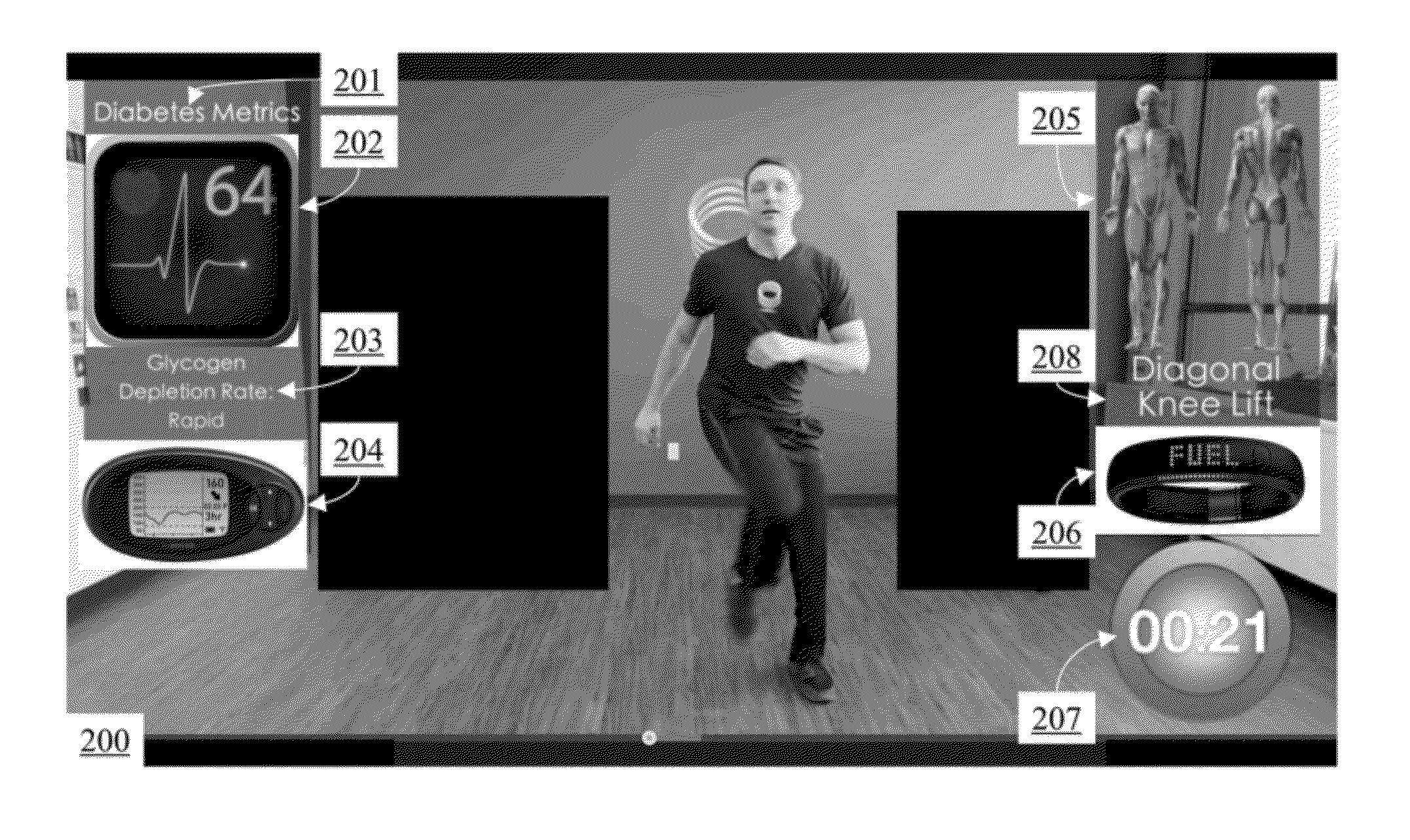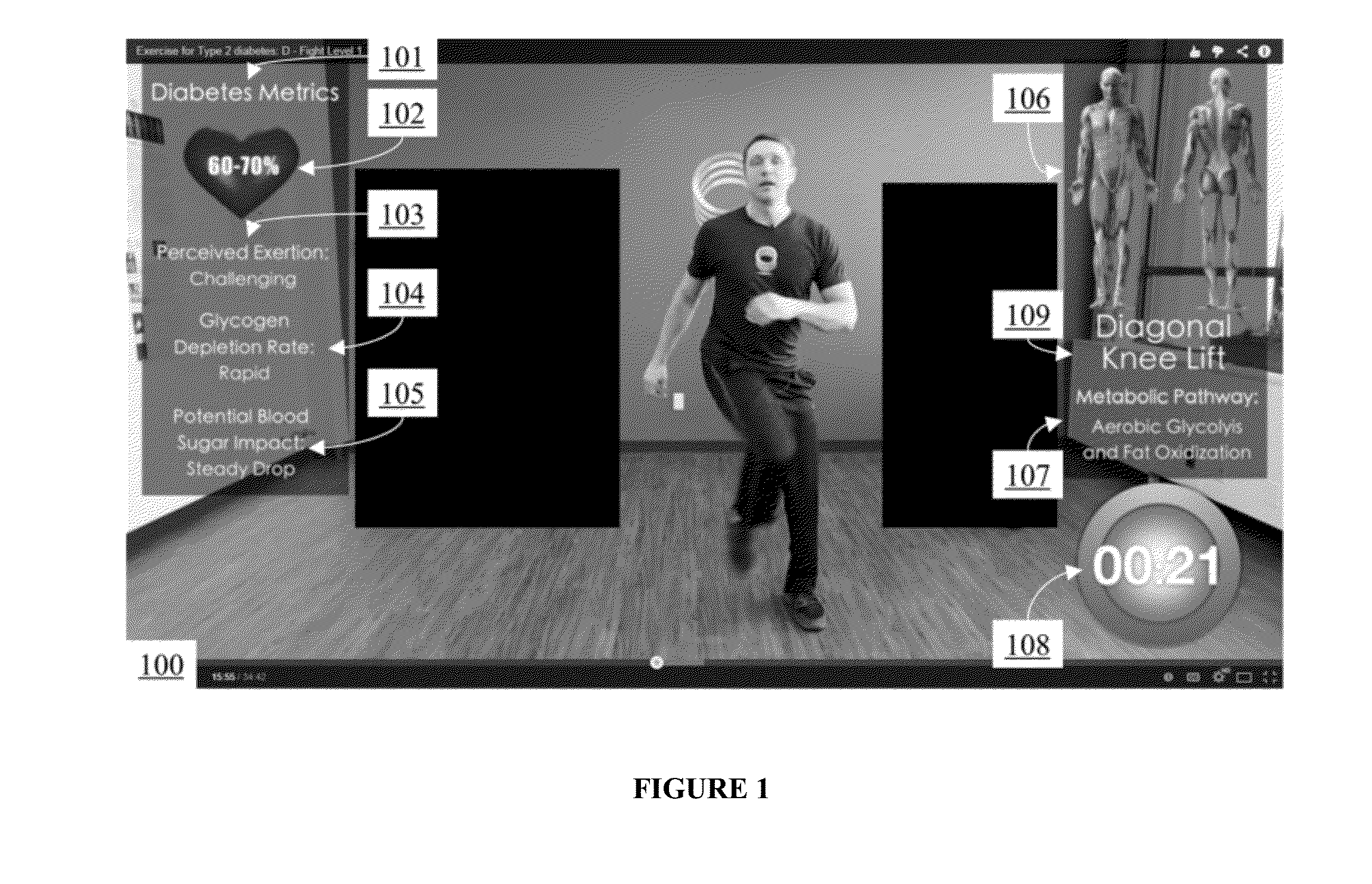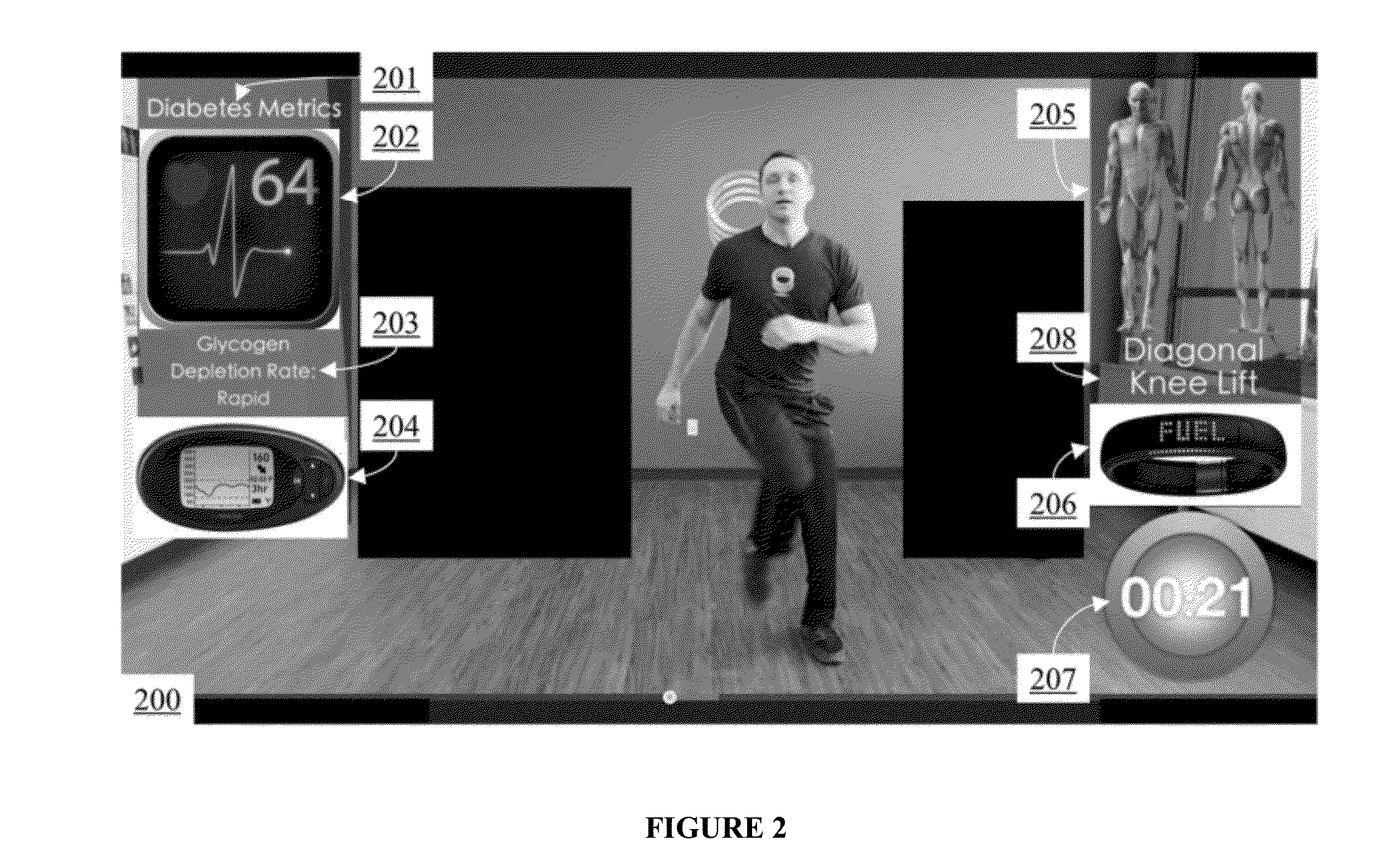Algorithms for Diabetes Exercise Therapy
- Summary
- Abstract
- Description
- Claims
- Application Information
AI Technical Summary
Benefits of technology
Problems solved by technology
Method used
Image
Examples
example 1
Use of Algorithms for Diabetes Exercise Therapy to Improve Diabetic Outcomes
[0120]A subject was a 52 year-old male diagnosed with type 2 diabetes for about 8 years. Prior to beginning the exercise therapy, the subject was on a combination anti-diabetic therapy comprising injection with insulin. The subject engaged in exercise guidance based on the methods disclosed herein, including exercise suggestions based on desired diabetes metrics outcomes, including A1C reduction, weight loss, and reduction of anti-diabetic medication usage. Having engaged the exercises based on the methods disclosed herein, the subject achieved several diabetes metrics outcomes, including: a reduction of A1C from about 9.3% to about 6.0%; a weight loss of 58 pounds; and a reduction of insulin therapy from 116 units per day to about 59 units per day.
example 2
Use of Algorithms for Diabetes Exercise Therapy to Improve Diabetic, Cardiovascular, and Pulmonary Outcomes
[0121]A subject was an elderly male that was diagnosed with type 2 diabetes and required an oxygen tank for breathing. Several years prior to beginning the exercise therapy, the subject had experienced substantial liver failure that limited the ability of the subject to exercise. The subject engaged in exercise guidance based on the methods disclosed herein, including exercise suggestions based on desired diabetic, cardiovascular, and pulmonary outcomes and capacities of the subject. Having engaged the exercises based on the methods disclosed herein, the subject achieved several desired outcomes, including: increased muscle tone; increased cardiac stress resistance; and increased lung function.
example 3
Use of Algorithms for Design of Targeted Type 1 Diabetes Exercise Therapy and Insulin Administration
[0122]A subject is a 31 year-old female diagnosed with type 1 diabetes for 26 years. The subject measures a glucose level with a continuous glucose monitoring device and enters a resting glucose level reading into the application. The resting glucose level is 128 mg / dL. The subject selects a desired diabetes outcome in the application of A1C goal. The subject receives instruction for an exercise routine to be performed in a gym based upon weight lifting selected to create an active heart rate from 90% to 100% of the maximum heart rate of the subject. The maximum heart rate was estimated by subtracting the age of the subject from 220, to yield a maximum heart rate of 188 beats per minute (bpm).
[0123]As the instructed, exercise routine creates an active heart rate from 90% to 100% of the maximum heart rate of the subject, which increases the glucose level of the subject, the application...
PUM
 Login to View More
Login to View More Abstract
Description
Claims
Application Information
 Login to View More
Login to View More - R&D
- Intellectual Property
- Life Sciences
- Materials
- Tech Scout
- Unparalleled Data Quality
- Higher Quality Content
- 60% Fewer Hallucinations
Browse by: Latest US Patents, China's latest patents, Technical Efficacy Thesaurus, Application Domain, Technology Topic, Popular Technical Reports.
© 2025 PatSnap. All rights reserved.Legal|Privacy policy|Modern Slavery Act Transparency Statement|Sitemap|About US| Contact US: help@patsnap.com



